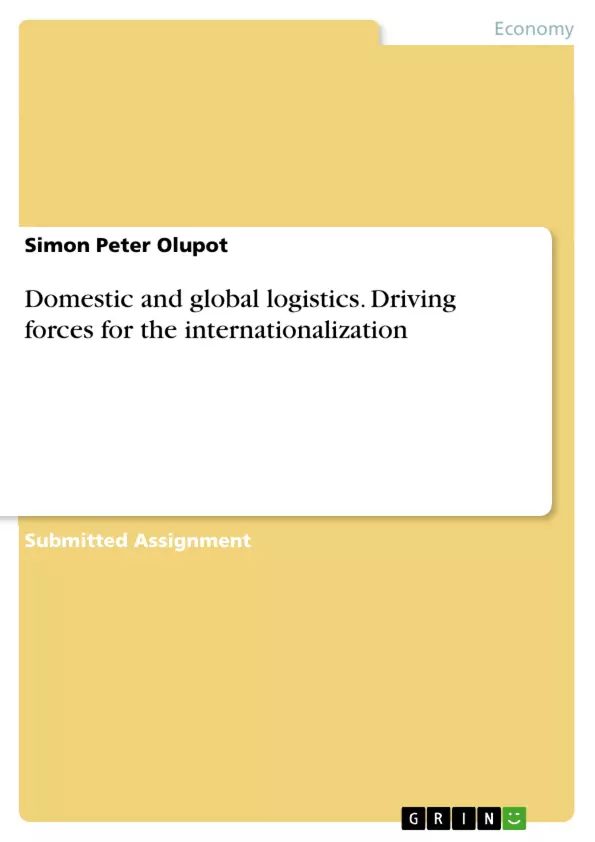This paper is about logistics and wants to distinguish between domestic and global logistics. Additionally, it discusses the driving forces for the internationalization of logistics and the related challenges.
Today, logistics has acquired a wider meaning and is used in business for the movement of raw materials from suppliers to the manufacturer and finally the finished goods to the consumers. Logistics is also referred to as physical distribution. No other area of business operations involves the complexity or spans the geography of logistics. All around the world, 24 hours of every day, seven days a week, during 52 weeks a year, logistics is concerned with getting products and services where they are needed at the precise time desired. It is difficult to visualize any marketing, manufacturing or international commerce without logistics.
Domestic logistics involves tracking and coordinating the flow of goods and services from their sources until the customer receives a final product within the same country. So “international logistics” refers to the flow of goods, services, or people between different countries
Table of Contents
- Introduction to logistics, domestic and global logistics
- Domestic logistics
- International logistics
- Example of International Logistics
- Global logistics
Objectives and Key Themes
This text aims to distinguish between domestic and global logistics and to discuss the driving forces behind the internationalization of logistics, as well as the associated challenges.
- Definition and historical context of logistics
- Distinction between domestic and international logistics
- Drivers of globalization in logistics
- Challenges associated with international logistics
- Examples of global logistics in practice
Chapter Summaries
- Introduction to logistics, domestic and global logistics: This chapter provides a definition of logistics and traces its historical evolution. It also outlines the key differences between domestic and global logistics.
- Domestic logistics: This chapter defines domestic logistics and its scope, emphasizing that all production and transportation occur within national borders.
- International logistics: This section focuses on the definition and characteristics of international logistics, highlighting its global scope and the importance of cross-border considerations. It includes a detailed example illustrating the logistical process for a diamond ring sourced from various international suppliers.
- Global logistics: This chapter explores the definition and characteristics of global logistics, emphasizing the design and management of systems that facilitate material flows across national borders. The chapter highlights the importance of global sourcing, manufacturing, and distribution networks for successful global logistics operations.
Keywords
Key terms and concepts addressed in this text include domestic logistics, international logistics, global logistics, globalization, supply chain management, international trade, cross-border operations, sourcing, manufacturing, distribution, and international transportation.
- Citation du texte
- Simon Peter Olupot (Auteur), 2019, Domestic and global logistics. Driving forces for the internationalization, Munich, GRIN Verlag, https://www.grin.com/document/542773



